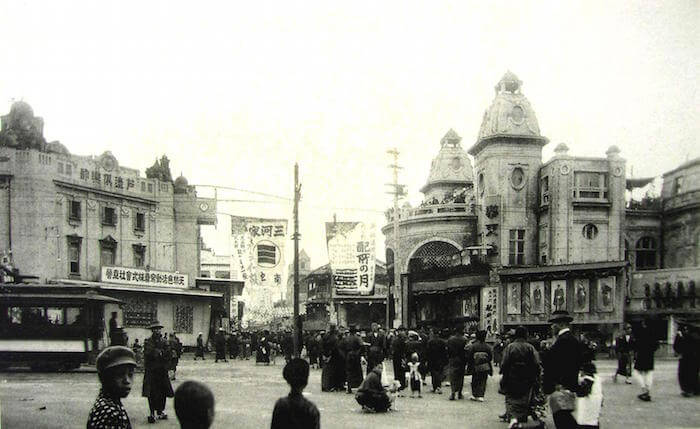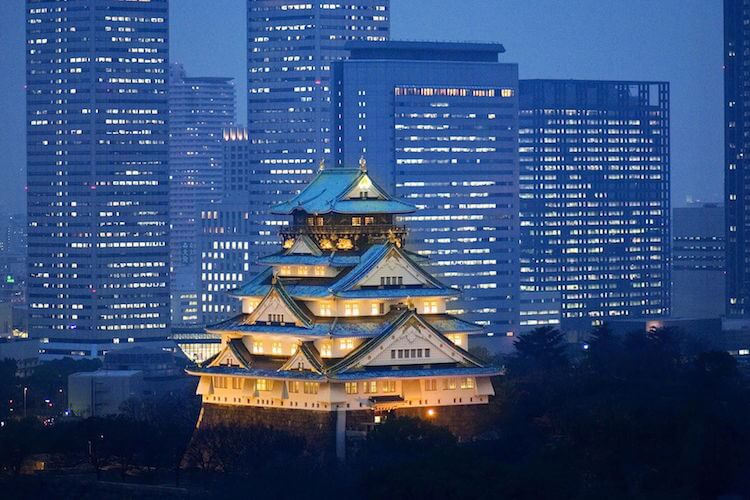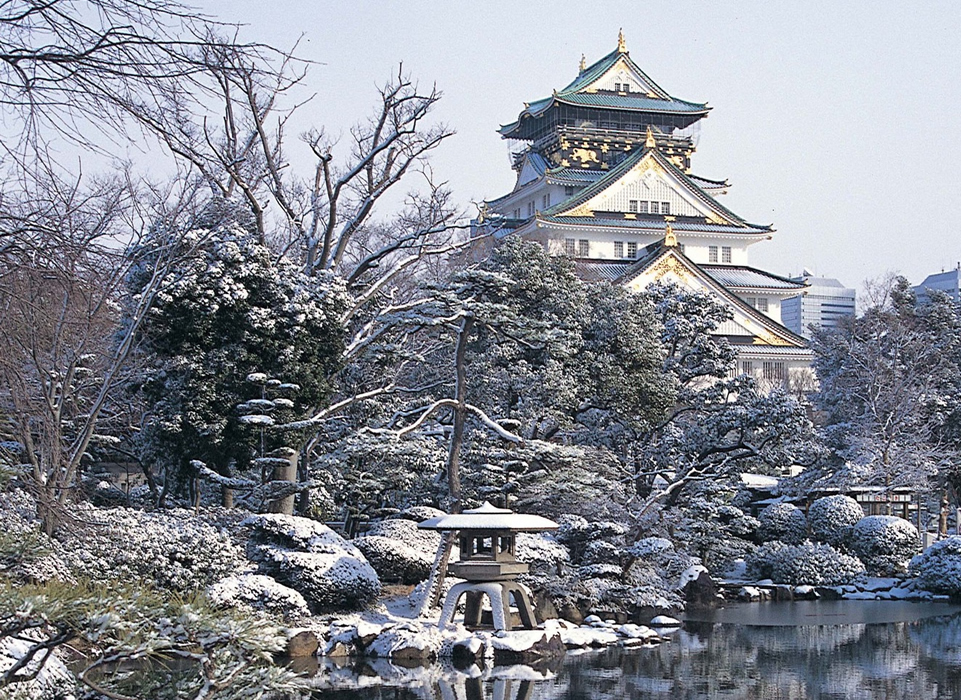
Osaka is a large port city and commercial center on the Japanese island of Honshu. It's known for its modern architecture, nightlife and hearty street food. The 16th-century shogunate Osaka Castle, which has undergone several restorations, is its main historical landmark. It's surrounded by a moat and park with plum, peach and cherry-blossom trees. Sumiyoshi-taisha is among Japan’s oldest Shinto shrines.


The construction of Osaka Castle (大阪城, Ōsakajō) started in 1583 on the former site of the Ishiyama Honganji Temple, which had been destroyed by Oda Nobunaga thirteen years earlier. Toyotomi Hideyoshi intended the castle to become the center of a new, unified Japan under Toyotomi rule. It was the largest castle at the time.

However, a few years after Hideyoshi's death, Tokugawa troops attacked and destroyed the castle and terminated the Toyotomi lineage in 1615. Osaka Castle was rebuilt by Tokugawa Hidetada in the 1620s, but its main castle tower was struck by lightening in 1665 and burnt down. It was not until 1931 that the present ferro-concrete reconstruction of the castle tower was built. During the war it miraculously survived the city wide air raids. Major repair works gave the castle new glamor in 1997. The castle tower is now entirely modern on the inside and even features an elevator for easier accessibility. It houses an informative museum about the castle's history and Toyotomi Hideyoshi.


Osaka (大阪, Ōsaka) is Japan's second largest metropolitan area after Tokyo. It has been the economic powerhouse of the Kansai region for many centuries. Osaka was formerly known as Naniwa. Before the Nara Period, when the capital used to be moved with the reign of each new emperor, Naniwa was once Japan's capital city, the first one ever known. In the 16th century, Toyotomi Hideyoshi chose Osaka as the location for his castle, and the city may have become Japan's political capital if Tokugawa Ieyasu had not terminated the Toyotomi lineage after Hideyoshi's death and moved his government to distant Edo (Tokyo).


Minoo Park (箕面公園, Minō Kōen, also spelled Mino or Minoh) is a forested valley on the outskirts of Osaka, just north of the urban sprawl. During the fall, it is one of the best places in the Kansai Region to see the autumn colors in a natural setting, as opposed to the attractive fall foliage found at temples and gardens. The colors are usually best in the second half of November.Similar to Tokyo's Mount Takao, Minoo Park is the closest spot to the busy metropolis of Osaka to find a spacious natural recreation area. The park can be reached in less than 30 minutes from the downtown Umeda area. Another similarity, Takao and Minoo were both given quasi-national park status in 1967 to commemorate the hundredth anniversary of the Meiji Period (1867-1912).


Located around Namba Station, Minami (南, "South") is one of Osaka's two major city centers. It is the city's most famous entertainment district and offers abundant dining and shopping choices. The district is easily accessible as it is served by three train companies as well as three subway lines and a highway bus terminal. The other major city center is Kita (北, "North") which is located around Osaka and Umeda Stations.


The city of Osaka has its beginnings far in the past. The first signs of human life and habitation in the area around Osaka were buried skeletons that are dated back to the 5-6th century before Christ. During the Yayoi period, the city experienced an increase of population as the rice farming grew and the port became a greater point of trade. Because of a larger amount of bigger, richer tombs, scientists came to the conclusion that the city also was a centre for politic actions. In 645, Emperor Kōtoku built the Naniwa Nagara-Toyosaki Palace, making Naniwa – the former Name of Osaka by that time that today is still used for certain districts – the new capital of Japan. Shortly after another city became capital but Naniwa kept being a centre and connection for trade with near prefectures and countries like China and Korea.

In 1496, a Buddhist sect set its new headquarters in the strong and well fortified Ishiyama Hongan-ji temple. The government set up a siege for nearly ten years until the sect was driven out and the temple was destroyed. Instead to rebuild it, the famous Osaka Castle was built in its place. Throughout the years, Osaka grew to an economic centre and a major Japanese city. Besides economy and trade, it developed a rich art culture, bringing up ukiyo-e pictures and Kabuki theaters for example. In 1837, a samurai called Ōshio Heihachirō started a rebellion supported by the locals because the government refused to help the many poor families. It violently put the rebellion down and Ōshio committed suicide after his defeat. Thus, can be seen that even such a modern city had its problems with poverty, hunger and more. In 1888, then, Osaka was opened up for foreign trade which led to another increase of area and population.

During the 19th century, Osaka was expanded massively. The promising situation there brought in many immigrants from Korea. Since the politics were strong in the direction of industrialization and economy, the city continued to grow at fast speed and became one of the most modern cities in Japan. During the World War II, Osaka was hit several times by American air raids and suffered the destruction of wide urban areas. Since the war, the city is building itself up. Today it is a major spot for tourism. The wide variety of the culture from the past still lives on and has something to offer for every tourist that comes along.

US Dollar:
Malaysian Ringgit: